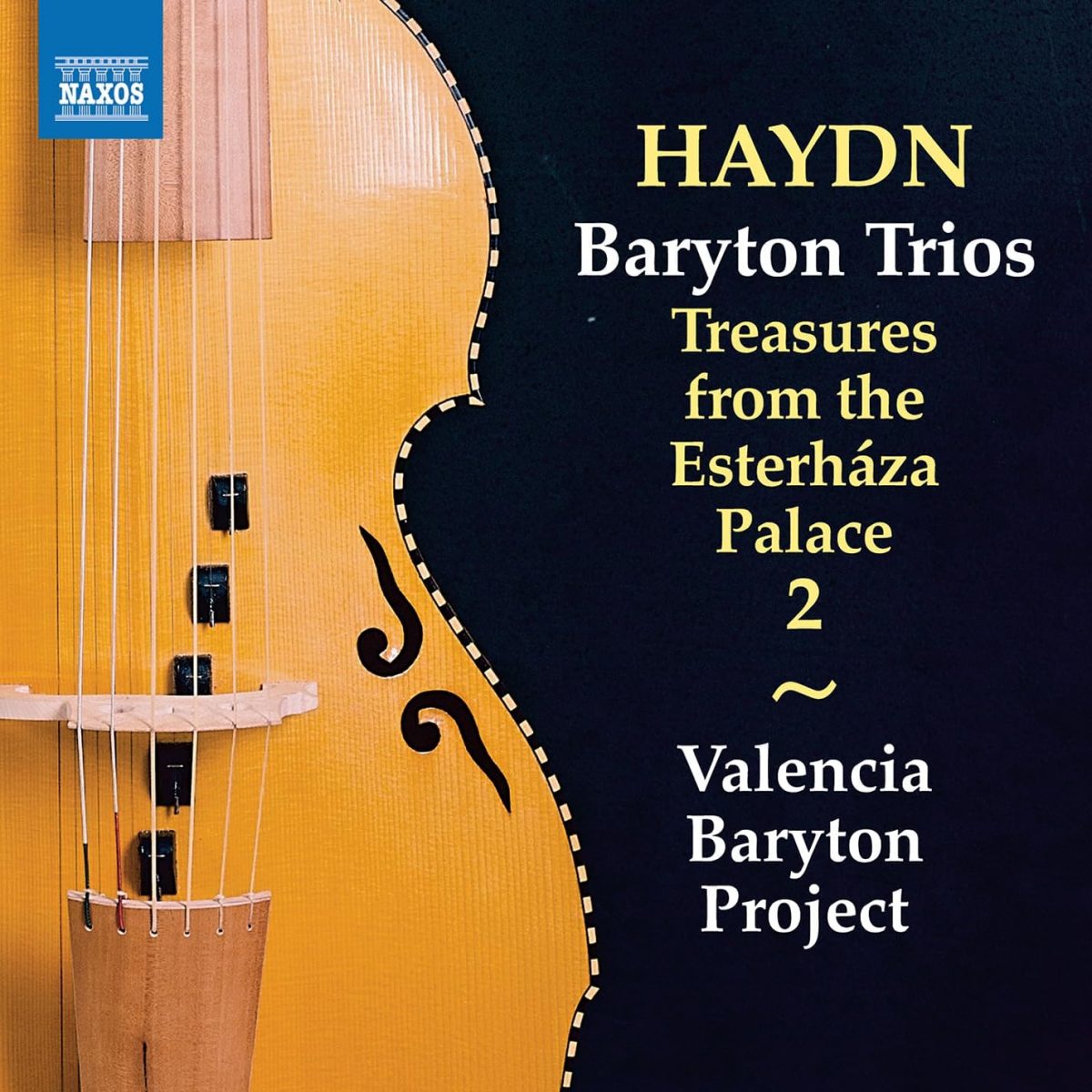Treasures from the Esterháza Palace 2
Valencia Baryton Project
62:55
NAXOS 8.573504
Haydn’s employer, Prince Nikolaus Esterháza, was a proficient player of the baryton, essentially a bass viola d’amore – with strings stopped over a bridge and played with a bow and a series of sympathetic strings that resonate and can be plucked with the thumb. The composer was commissioned to write new music for the Prince and he produced over a hundred trios with viola and cello. Each begins with its longest movement, followed by a minuet and trio (or a similar dance), and concludes with a short, quick movement. Many of them are in A major because of the tuning of the baryton, but this selection of six by the Valencia Baryton Project (Matthew Baker as the Prince on baryton, Estevan de Almeida Ries as Haydn on viola, and Alex Friedhoff on cello) includes one each in C, D and G major. The music is – of course – charming, especially so when the viola and cello accompany the main attraction with plucked notes. I have heard several recordings of this repertoire (though not these particular pieces) before and have rarely been so aware of the sympathetic strings, the metallic buzz of the plucked notes. I mean that positively – the engineers have done an excellent job of capturing the sound quality without distorting it or upsetting the balance with the other instruments. I was sure a couple of tracks would be more than enough, so imagine my surprise when the music stopped – I’d happily listened to over an hour of Haydn played by the same three instruments! It really was a very pleasant hour.
Brian Clark

3 replies on “Haydn: Baryton Trios”
Metallic buzz? Surely the baryton was strung in gut. Or are these modern instruments pretending to be historical ones?
https://en.wikipedia.org/wiki/Baryton
Hi James – just wanted to answer your question here. The back strings are made out of either iron or brass, depending on which string (there is a certain interchangeability in the F# and G strings). This is the same material that would have been used in the 18th century but the front strings are, of course, gut and are the same front strings as a bass viol. In this case I am using pure sheep gut for the top 4 strings and a copper/silver wound gut for the bottom 2 strings that provides a little more brightness to the tone of the G and D string which the baryton needs. Hope this helps and let me know if you have any other questions.
And Brian – I am so happy you enjoyed the recording, thanks so much for your kind words! I’m sure Phil Rowlands and Tim Burton, the engineers, will also be thrilled to read the review.